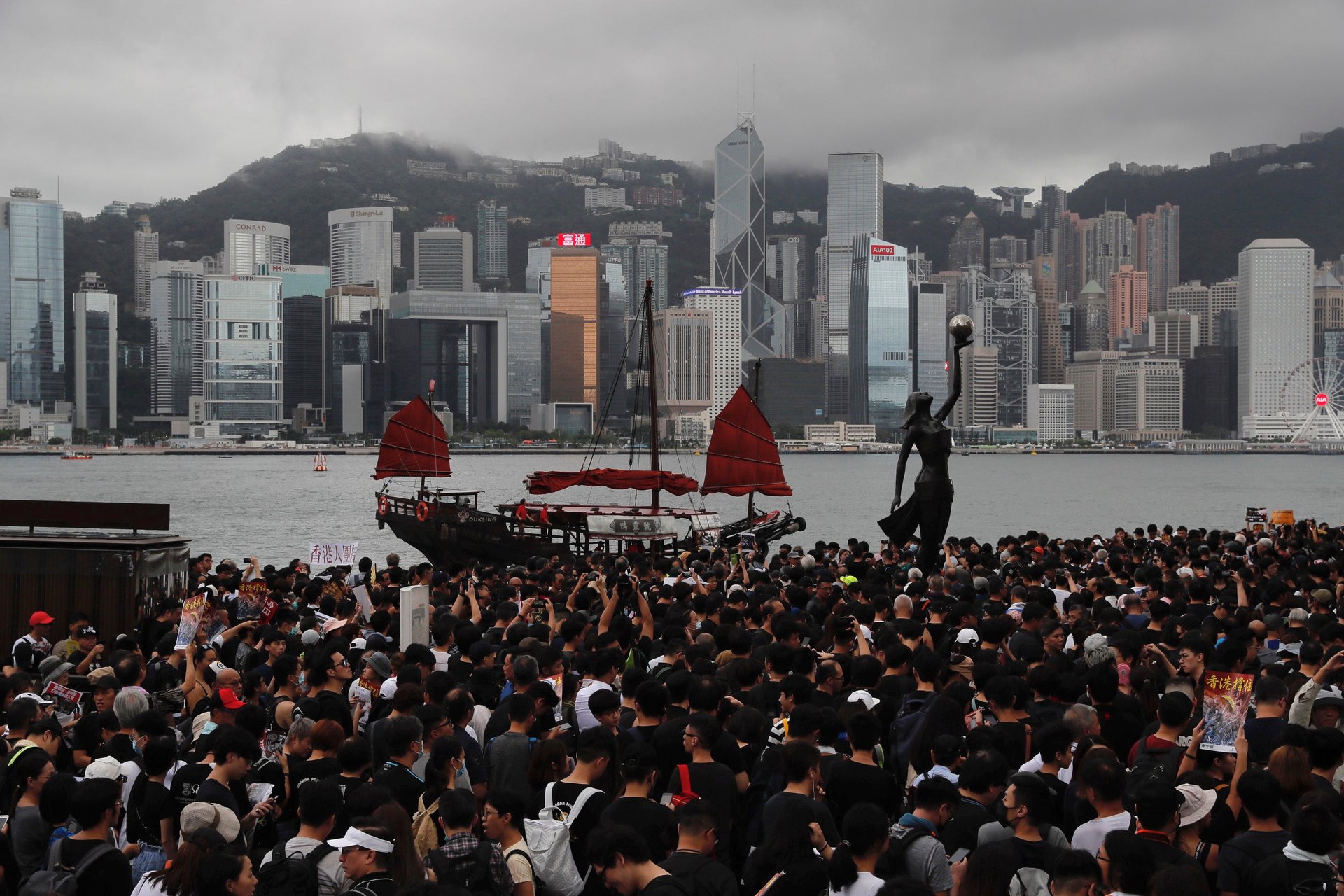Hong Kong’s protesters put AirDrop to ingenious use to breach China’s Firewall
Airdrops have long been a useful tactic to get behind enemy lines.


Airdrops have long been a useful tactic to get behind enemy lines.
During World War I, Allied forces used aircraft and balloons to drop propaganda leaflets over German-occupied countries to combat the enemy’s psychological warfare. South Korean activists have also long used balloons to deliver information critical of the North Korean regime to those on the other side of the demilitarized zone.
Now, Hong Kong’s protesters are using AirDrop, a file-sharing feature that allows Apple devices to send photos and videos over Bluetooth and Wi-Fi, to breach China’s Great Firewall in order to spread information to mainland Chinese visitors in the city. Leaving AirDrop settings open allows anyone in the vicinity to send files to your device.
A protest held yesterday (July 7) in Tsim Sha Tsui, one of Hong Kong’s most popular tourist districts, had a clear aim: to tell people from mainland China about the city’s opposition to a hated extradition bill, which has mobilized millions of people over the past several weeks to multiple protests and presented the most critical challenge to the local government in decades.
But news of the protest has been heavily censored in mainland China, with any mention of the mass movement wiped off the Chinese internet. Even songs alluding to the city have been scrubbed. As such, many Chinese tourists were visibly confused by the large march, which organizers say drew an estimated 230,000 people.
Hong Kong’s protesters have therefore turned to Apple’s AirDrop feature to get their message across to their mainland Chinese compatriots. That the messages are written in simplified Chinese—Hong Kongers use traditional Chinese—confirm that the intended audience is Chinese tourists.
“Did you know? Over the past month, Hong Kong has seen three massive rallies, with as many as 2 million people taking to the streets,” read one such AirDropped poster. “Don’t wait until [freedom] is gone to regret its loss. Freedom isn’t god-given; it is fought for by the people.”
“Maybe you’ve heard that Hong Kongers are constantly marching, 1 to 2 million people at a time, to oppose the extradition bill,” read another poster. “We wish you a pleasant journey. Feel the freedom of assembly along the way. This space for freedom is the reason why we fight.” Other AirDropped files explained why there were no “foreign forces” behind Hong Kong’s protests, and how China’s authoritarian system had led to the Tiananmen massacre of 1989.
Some AirDropped files even contained what looked like QR codes linked to Alipay and WeChat Pay, two major mobile payments systems used in China. People who scanned the codes thinking they would get free money instead received information on the dangers of the extradition law.
Protesters also came up with other creative ways to share their anti-extradition, pro-democracy messages with mainland Chinese tourists. They held up placards that drew a direct link between protests in Wuhan—where thousands have been protesting against a waste incinerator plant but news of which has been heavily censored—and the protests in Hong Kong. They also handed out physical leaflets to tourists, informing them of the state of censorship in mainland China and urging them to join the fight for freedom.